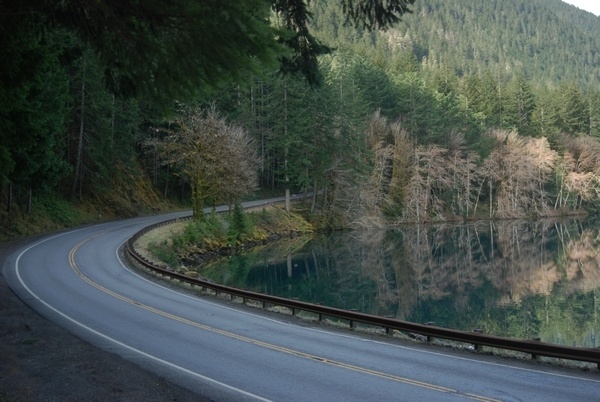In the spring of 1994, West End resident Richard Cahill began a letter writing campaign to encourage Olympic National Park to take a good look at the dangerous trees around Lake Crescent. In his capacity at the DNR, Cahill knew about danger trees and was hoping to avert tragedy. With the recent tragedy at Lake Crescent, Cahill again has called out to ONP to do something and he shared his correspondence with the Forks Forum.
Cahill’s first letter was to Maureen Finnerty, then superintendent:
“I have recently become aware of an increasing number of hazard trees adjacent to Highway 101 in the vicinity of Lake Crescent.
The trees I refer to are primarily in the form of advanced stage snags and are located at or near the following mileposts: 221.4, 222.6, 223.2, 223.4, 225.5, 226.4, 227, 227.5, 228.3, 230.1, 230.5.
The majority of these snags are located on steep slopes immediately south of the highway. The underlined mileposts indicate snags located on the north side of the highway. I believe that the above-mentioned snags represent a significant public safety issue. Please let me know what action you plan to take.”
Finnerty wrote back and outlined the park’s dangerous tree plan was as follows:
“The park’s current hazard tree management program addresses trees in the immediate vicinity of recreational sites and administrative areas. In the case of roadways, tree removal is limited to areas where persons congregate for extended periods of time, such as at parking areas, viewpoints, and roadside exhibits.”
She went on to say, “To make such areas ‘hazard-free’ would require removing all trees on either side of the road for a distance equal to the average tree height, 100-200 feet in some locations. Extensive clearing such as this is considered impractical and inappropriate in Olympic National Park, and is not prescribed in our hazard tree management plan.”
Cahill wrote back, that Finnerty’s reply was inadequate at best and generally perceived to be an irresponsible attempt to justify inaction.
In the letter Cahill also said, “I am not advocating the removal of all trees 100-200 feet either side of the highway. In the March 11 letter, 11 snags were identified. These snags could be removed by professional fellers resulting in no noticeable visual impact. This issue is much too serious to go unresolved. I would hope that public safety would receive a higher priority with the Superintendent of Olympic National Park.”
Cahill also sent letters to Slade Gorton, Norm Dicks and Patty Murray, and got little help or interest.
Norm Dicks wrote, “I am sorry that your original reply from the NPS was unsatisfactory. However, I hope this correspondence has helped to clarify their difficulty in complying with your request. If I may be of further assistance to you, please do not hesitate to contact me again.”
Dicks also added a handwritten note to the letter stating that he would soon be driving around the lake and he would look for signs of hazardous trees at that time.
Cahill wrote back to Dicks, “I recently received your response regarding hazard trees along Highway 101 at Lake Crescent. The delayed response I can accept, however I am completely underwhelmed with your apparent lack of effort to become informed on this issue before responding. This serious public safety issue deserves more support than a casual drive around Lake Crescent.”
At this time in the letter writing campaign Cahill did have a glimmer of hope in then acting superintendent of Olympic National Park Roger Rudolph and Dan Mason, Lake Crescent Sub-District ranger, who agreed to meet and discuss this very real public safety issue with Rick White (Washington State Labor and Industries) and Cahill. On the day of their meeting Mason, White and Cahill viewed specific snags that presented a significant hazard to the general public.
Eventually, seven of the 13 danger trees identified were removed but the most dangerous … were deemed so dangerous, they were too dangerous to be taken out. So they were left. Rudolf stated in a letter that they were more dangerous to the faller than the driving public. Cahill told the Forks Forum that there are other ways to fall a tree and that those six other trees also could have been removed.
So 20 years later and we have the tragedy on New Year’s Day that took several lives and Rick Cahill has revitalized his campaign. He recently has reached out to Clallam County District 3 County Commissioner Bill Peach and shared his letter writing history. At a recent West End Business meeting, Commissioner Peach commented that with the roadwork coming up around the lake it might be a good time to do something. Until then watch for falling trees! — and don’t forget the boulders.



